The woman behind the myth
13th September – 19th October 2008
La Rocca di Cento (Cento Fortress)
Italy
Curators: Francesca Baboni, Stefano Taddei
Organisation: Associazione Culturale L’Altra Porta (Bologna)
Paintings by Rivkah Frances Hetherington
An exhibition which revolves around a name. Around the meaning of a woman's name. And not just any woman's name. What is, in fact, a name? It is something which identifies us and as such it defines us. Joan of Arc is not the same person as the girl who went by the name of Jean Romée. In her book “St. Joan of Arc”, Victoria Sackville-West observes how three iconic images come to mind when one thinks of Joan of Arc: Joan, the young peasant girl, surrounded by sheep in the idyllic fields of South France; Joan the warrior, a heroine in shining armour mounted on a white mare; Joan the Saint, whose face disappears in clouds of smoke, her eyes raised heavenwards, as she murmurs her last words.
This exhibition aims at revealing a human portrait of Jeanne Romée as seen through the features of the actress Renée Jeanne Falconetti. She plays the role of a young girl who had the courage and the determination to challenge every rule of her time. Behind the myth, we are confronted with the terrible reality of the anger inevitably provoked by whoever refuses to play by society's rules. The installation takes the form of an 18 metre frieze made up of 45 canvases painted in decisive gestures that lie somewhere between a hyper-realist figuratism and an emotive charge which can only be described as expressionistic. By means of the hair-raising close-ups of Falconetti (at times in despair, at times determined) and those of her judges (at times overcome with apparent compassion, at times contorted in stern anxiety), the young painter expounds an unavoidable situation: the end of a life, an end endured precisely because there were no other choices. The viewer is led into the exhibition space through a series of seven veils, each one 3 metres by 4 metres. Covered with writings taken from Joan of Arc's trial, the veils descend from the ceiling to the floor, creating a series of transparent walls before arriving at the frieze itself. Further veils, hanging in the castle's tower at the farthest end of the frieze, obsessively continue the narration. In another adjacent tower, the exhibition continues with the presentation of the video of Dreyer's film as well as documentation (photographs and posters) from the Cineteca of Bologna.
The Passion of Joan of Arc by Dreyer, unlike later films on the Saint's life, is based entirely on historical documents: the minutes of the trial and condemnation archived in the Library of the National Assembly in Paris. The film is further noted for the performance of Renée Falconetti, frequently cited as one of the most extraordinary in the history of cinema.
The exhibition brings together an exhaustive project of paintings, installation and video which aims at not only representing an objective historical situation and condition but also demands that we reflect upon the conditionings of an intolerant society.
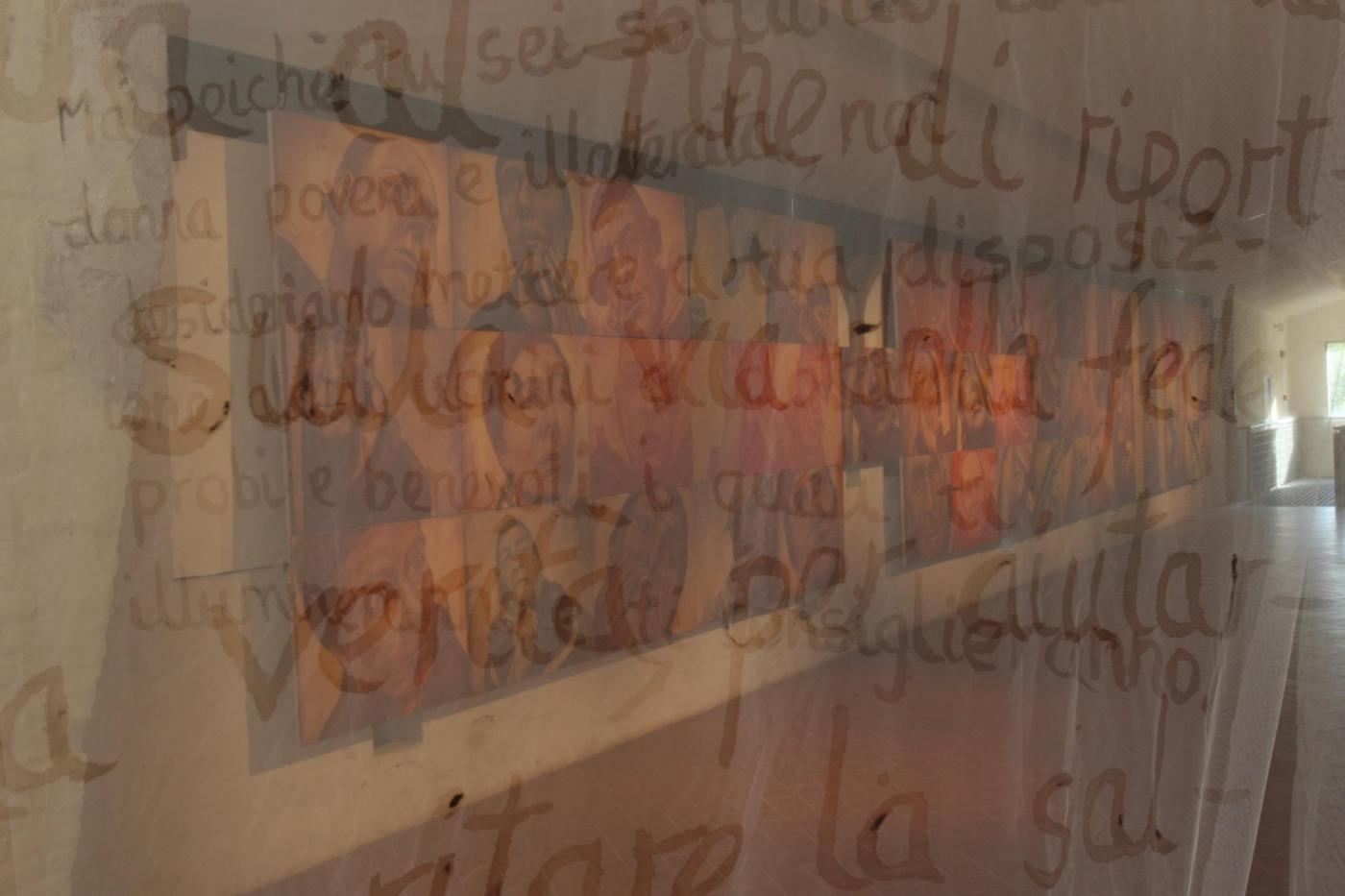

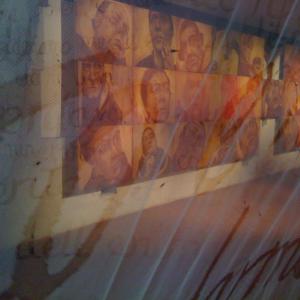
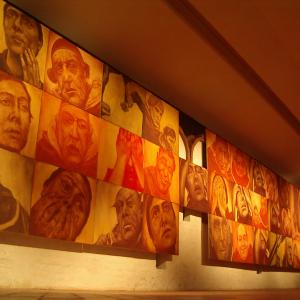
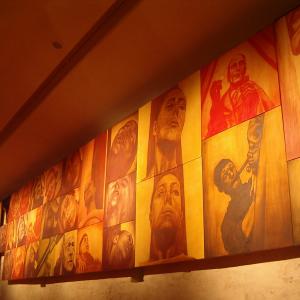
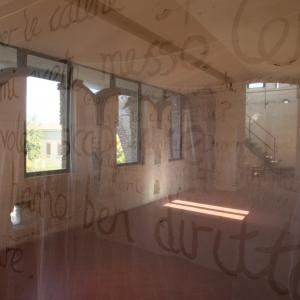
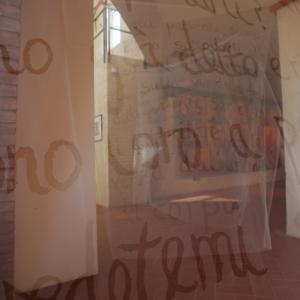
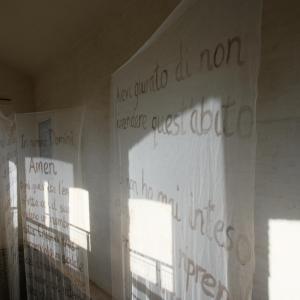
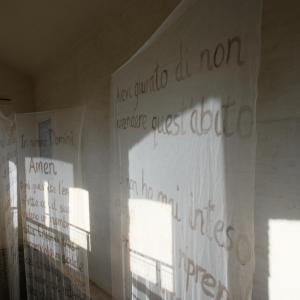
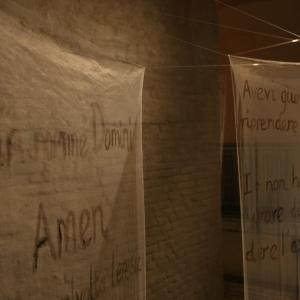
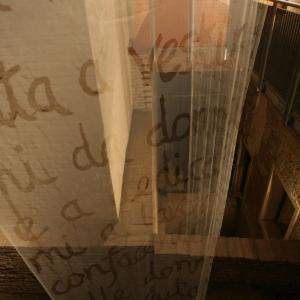







Comments 0
Say something